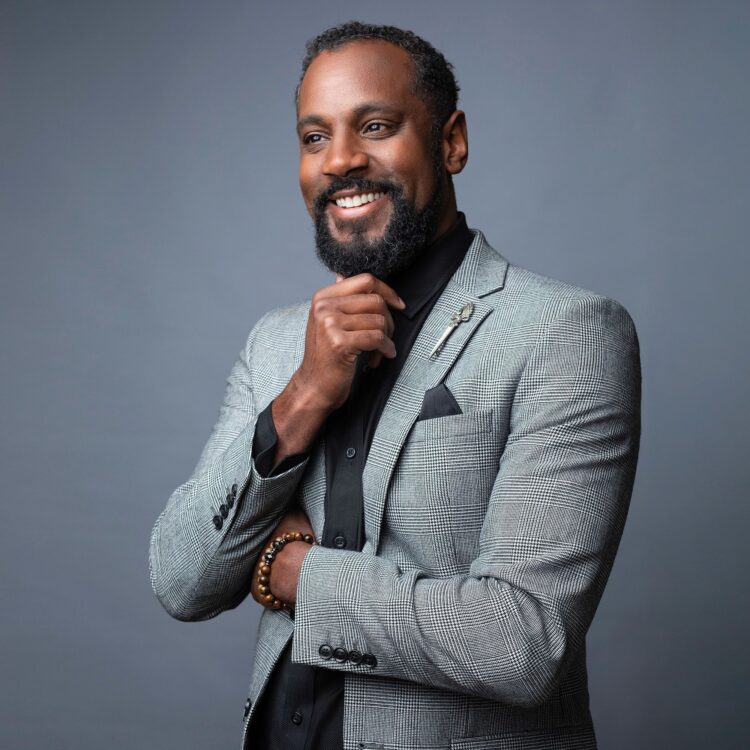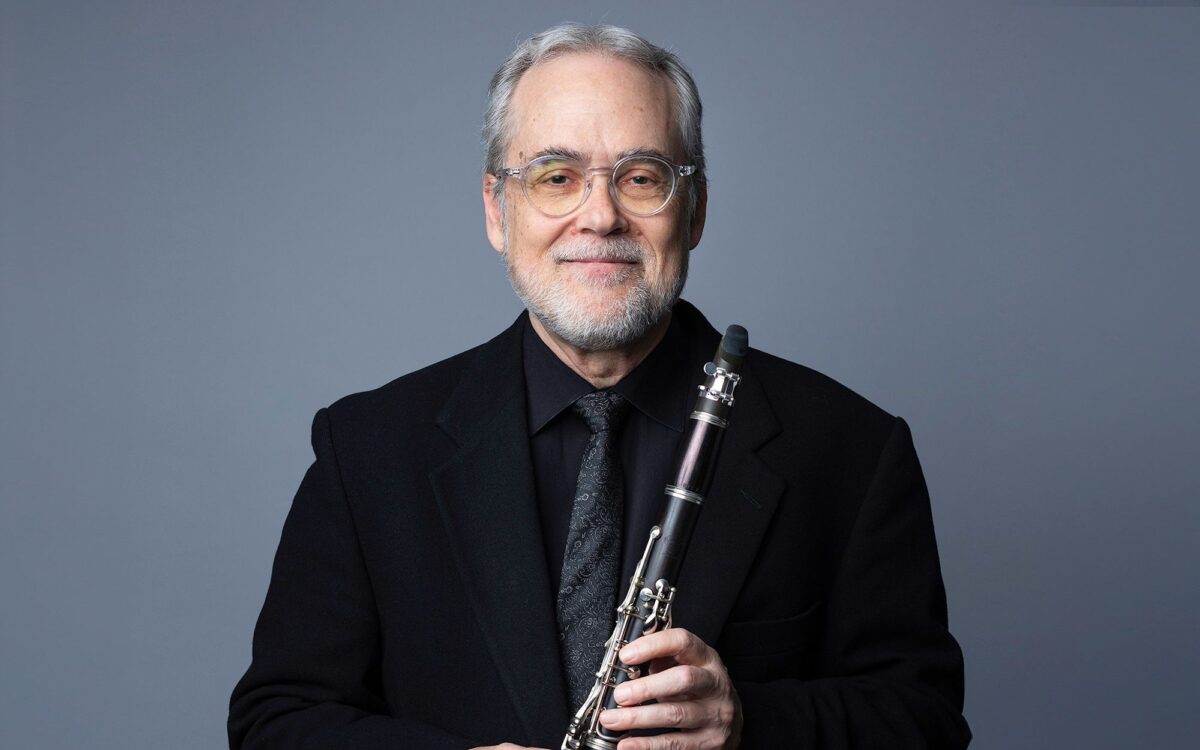WAKE UP! Concerto for Orchestra
Carlos Simon was born April 13, 1986, in Washington, DC, grew up in Atlanta, Georgia, and is currently based in Washington. He composed WAKE UP! Concerto for Orchestra on a commission from the San Diego Symphony Orchestra with the National Symphony Orchestra (Washington, DC). Rafael Payare led the San Diego Symphony in the world premiere on November 5, 2023. First Boston Symphony Orchestra performances: September 26-28, 2024, Andris Nelsons conducting.
The score for WAKE UP! calls for piccolo, 2 flutes, 2 oboes, 2 clarinets, 2 bassoons, 4 horns, 3 trumpets, 2 trombones, bass trombone, tuba, timpani, percussion (xylophone, vibraphone, crotales, metal pipes, cymbals, suspended cymbal, sizzle cymbal, tam-tam, large triangle, wind chimes, bell tree, sleigh bells, wood blocks, tom-toms, snare drum, brake drum or anvil, bass drum), harp, piano, and strings (first and second violins, violas, cellos, and double basses). Duration is about 20 minutes.
Just in the past five years, Carlos Simon has written more than a dozen works for orchestra, including short concert openers and orchestral studies, a suite of dances, a big work for voice, chorus, and orchestra, a trombone concerto, a four-movement symphony, and the present single-movement concerto for orchestra. Even as he has made the orchestra a primary medium, Simon has continued to explore ideas of genre, eclecticism, and storytelling within his music. His experience in many musical worlds has provided multiple pathways for direct communication with a diverse and evolving audience.
Premiered in 2022, Simon’s first Boston Symphony Orchestra commission, his Four Black American Dances, demonstrates several facets of his musical philosophy. Simon delved into social history to research the context and musical substance of the four dance styles and brought ideas from their original musical vernaculars—pounding percussion, mimicry of tap-dance, the shout chorus—into the orchestral world. Each dance presented a different tableau of African American life from a hundred, two hundred years past, subject matter that has only rarely been represented in symphonic music.
This interconnectedness of subject matter and music is key to Simon’s approach, which is illustrated on a much more personal, intimate, level in his concept album My Ancestor’s Gift. Consisting of aural installation, song cycle, spoken word, and chamber music, the album embraces the idea of blended genres and media to reflect how contemporary listeners take in both art and information. Working with familiar colleagues—as he would do again for his recent album Together—Simon leverages the energy and warmth of collaboration as practiced in the jazz and popular music realms. A major recent project, his Requiem for the Enslaved, was composed for a commission from his employer, Georgetown University, as a kind of artistic reparation for its history of engaging in slaveholding and the slave trade. Simon’s piece, in collaboration with spoken-word artist Marco Pavé, takes the big, abstract, overwhelming subject of the 400-year history of slavery in the U.S. and presents it through the stories of individuals, poignantly and intimately. The vulnerability apparent in this music also appears in the more “public” pieces written on commission for established ensembles and for the concert stage. His Tales—A Folklore Symphony is an example of his working within a traditional genre with music and ideas embodying a great deal of external resonance.
Simon has understood music as a both a social and a personal journey from an early age. His first practical experience was as the pianist for the Pentecostal church of which is father was pastor in Atlanta. With little formal training, Simon had to learn quickly and by ear. Church and Gospel music form the bedrock of his musical voice to this day, and the idea of music as a mission remains a powerful one. Simon progressed as a pianist to the point of deciding on a music career in high school and began arranging and writing his own music; he also experimented with DIY music-making on a home computer, the entry point of many a young musician to the practical world of sound design. Along with recordings of the symphonic canon, he was introduced to symphonic music and the possibilities of the orchestra via film composers, particularly John Williams. Simon studied at Georgia State University and Morehouse College before earning his doctorate in music composition from the University of Michigan. He has taught at Spelman College and Morehouse College and in 2020 he joined the faculty of Georgetown University, where he is now an associate professor of music.
“The way I think about things, I’m a composer first,” Simon has related, but that composer instinct has been strongly supported and affected by hands-on and pragmatic musical activities in several spheres. Along with the production and organizational requirements of his own recording projects, Simon has toured internationally with singer Angie Stone and was music director for the Broadway and pop star Jennifer Holliday on a tour that included a night with the Boston Pops and Keith Lockhart here at Symphony Hall. He participated in Gabriela Lena Frank’s Creative Academy of Music and was a Fellow of the Sundance Institute and Time Warner program for film scoring. His work has been recognized with the Medal of Excellence by the Sphinx Organization, a GRAMMY nomination (for Requiem for the Enslaved), and Georgetown University’s Magis Prize, among others, and he remains Composer-in-Residence for the Kennedy Center for the Performing Arts in Washington, D.C. Simon’s work has been commissioned by the Kennedy Center, American Ballet Theatre, BBC for the 2024 Proms, Minnesota Orchestra, Detroit Symphony, Los Angeles Philharmonic, Carnegie Hall, and many others. His Los Angeles Philharmonic commission Gospel Mass will be premiered this season under Gustavo Dudamel’s direction. The Boston Symphony Orchestra’s 2024-25 season began with the premiere of Simon’s Festive Fanfare and Overture, a concert opener to celebrate Andris Nelsons’ tenth anniversary as BSO music director. Simon has also been commissioned by New York’s Metropolitan Opera for a new work, The Highlands, slated to be produced by the company in 2027. He is the first Black composer commissioned for an original opera in the history of the Metropolitan Opera.
Simon wrote WAKE UP! Concerto for Orchestra for a commission from the San Diego Symphony Orchestra and National Symphony Orchestra. It was recorded by the National Symphony Orchestra and conductor Gianandrea Noseda for a recently released album featuring several of the composer’s orchestral works.
He writes of the piece,
This concerto for orchestra is inspired by the poem Awake, Asleep, by the Nepali poet Rajendra Bhandari. In this profound poetic offering, Bhandari warns of the danger of being obliviously asleep in a social world, but yet how collective wakefulness provides “a bountiful harvest of thoughts.” My goal in writing this work was not only wake a sleeping hall with the sound of the orchestra, but to leave those who hear the piece with the question: Am I asleep? For these reasons, I chose to compose a two-note rhythmic motif that acts as a “wakeup call” throughout the composition—as if the orchestra is speaking to the hall and the audience, “WAKE UP!”
Beyond its poetic inspiration, the sound world of WAKE UP! was partly inspired by the physical situation of its lead commissioner, the San Diego Symphony. The orchestra was in the process of renovating its auditorium, and Simon asked to visit the space. The construction site that he encountered led him to highlight the percussion section and to have them use found metal objects as part of their battery.
The genre of the concerto for orchestra, most famously represented by Béla Bartók’s work by that name, typically features virtuoso and highly characteristic passages for the various orchestral sections (or soloists)—strings, the individual woodwind and brass groups, percussion. In WAKE UP!, Simon contrasts powerful ensemble writing for the full orchestra with passages for individuals or orchestral sections. A questing opening alternates hints of the energetic full-ensemble music with soulful woodwind solos. The main orchestral idea ultimately dominates the first third of the piece. After an atmospheric transition, percussion is the first section to be spotlit in the episodic central passage, in which the musical foreground shifts from one timbral realm to another. Jazz harmonies color a lyrical blend of winds with pizzicato strings. Brass chorales surround a chromatic, romantic excursion for solo and section strings. The central passage is ushered out by the same atmospheric idea that introduced it, and a varied recapitulation of the opening brings the final wake-up call.
Composer and writer Robert Kirzinger is the Boston Symphony Orchestra’s Director of Program Publications.


